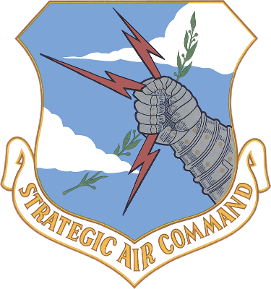Silver Creek Survivable Low Frequency Communications System site


The Silver Creek Low-Frequency site was built as a part of a communications redundancy plan by the Strategic Air Command.
The limits of high-frequency communications
The Strategic Air Command until the 1960s relied heavily on it's High Frequency radio systems to communicate with it's forces around the world and later it's missile sites. Initially named "Short Order" and later "Giant Talk", he problem with HF radio was interference by weather phenomenon and solar weather. By 1962, another major problem was discovered. During the Operation Dominic nuclear tests in the south Pacific, a phenomenon known as electro-magnetic pulse (or EMP) was discovered to greatly effect electronics and radio systems. The burst of a nuclear weapon at high altitude could disrupt high frequency communications for some time. The drawbacks of high-frequency radio were already known by SAC, and during the Kennedy administration there was a major push to create communications redundancies as a part of a more robust American command, control and communications system.
LF/VLF
One answer was found in low-frequency and very-low frequency radio. Experiments during World War II demonstrated that low-frequency radio had a long range (provided it had adequate power and a large antenna) and was soon adapted into the LORAN navigational aid system. It also was greatly less effected by solar and nuclear effects, it's biggest drawbacks were in the large sizes of an antenna required and it's very low data rate - a message could take a long time to be received.
Nevertheless the US Air Force proceeded in it's 487L program, soon to be named the Survivable Low Frequency Communications System (or SLFCS). Strategic Air Command had decided that two ground sites were to be constructed, the Hawes Radio Relay site northeast of Los Angeles in California and the Silver Creek Communications Annex site north of Silver Creek, Nebraska.
During December 1966, SAC had announced development of the site at Silver Creek and was soon accepted by Headquarters USAF on July 29, 1968 before activating into continuous operations on August 19th. The site was modestly "hard", in that some thought had gone into protecting the site against some nuclear blast effects. A 1,226 foot guyed-mast tower, that transmitted between 14kHz and 60kHz was in no way survivable to attack (there was no practical way to do so). The site was about 100 miles west of Offutt Air Force Base but also about 50 miles northeast of the former Cornhusker Army Ammunition Depot west of Grand Island, Nebraska. At least by the 1980s, CAAD was being used as an emergency relocation site for a mobile SAC command post.
The Silver Creek site could transmit and receive, later adapting the capability to help relay US Navy LF/VLF communications. Upon receipt of a valid war order, Silver Creek would transmit the message to American bomber bases, ICBM control centers, "Green Pine" relay stations in Canada (to help communicate with bombers flying north).
Airborne Systems
To back up Silver Creek and Hawes, the Strategic Air Command equipped a number of Post-Attack Command and Control (PACCS) EC-135s with long trailing wire systems that could transmit LF/VLF signals as well. Lacking the greater sources of power on the ground, along with a troubled development (the long, heavy wires would cause tremendous drag to the aircraft), PACCS aircraft were not as capable as the ground sites but were more survivable.
Program 616A
By 1974, SLFCS was improved to provide some anti-jamming protection, improved transmitting capability and range under the 616A program.
Decline
By the 1980s, other more advanced communications systems were due to replace SLFCS. Upgrades in Minuteman missile Launch Control Center communications, particularly with what was known as the Rapid-Execution And Combat Targeting (REACT), brought new advances to minimum essential emergency communications (known as MEECN). The Hawes site went offline in 1986 with Silver Creek deactivating in 1992. The site was demolished in 1995.